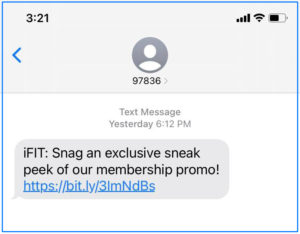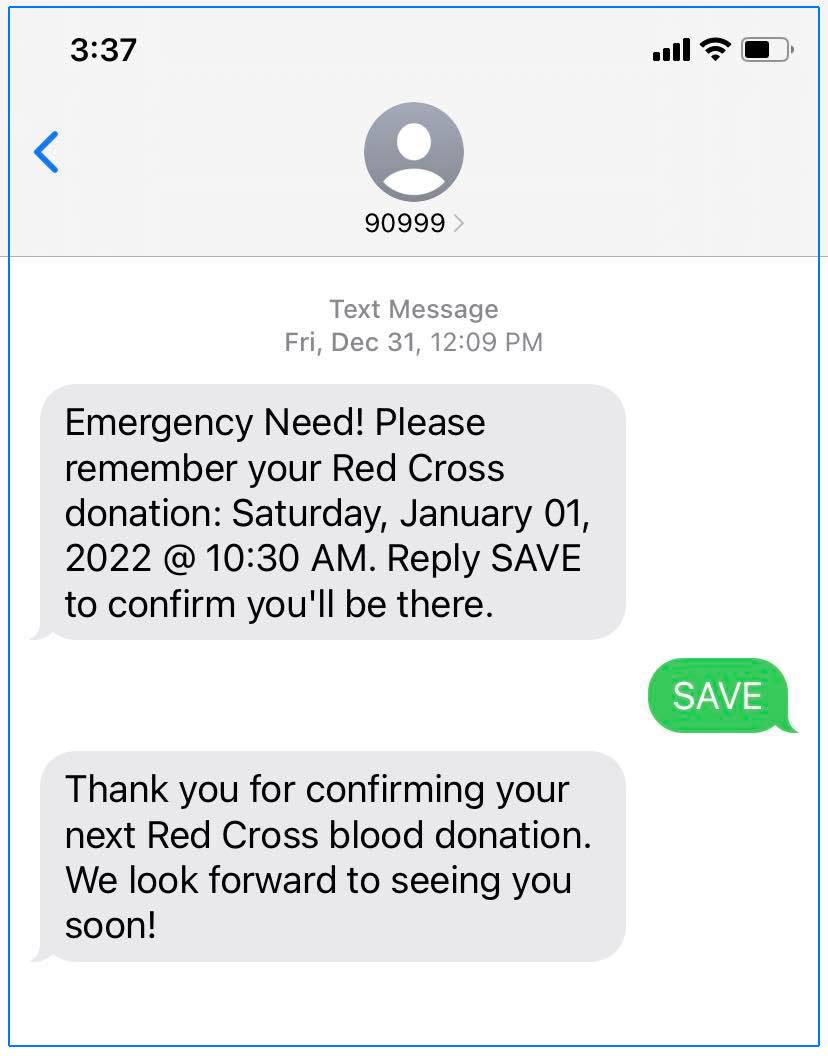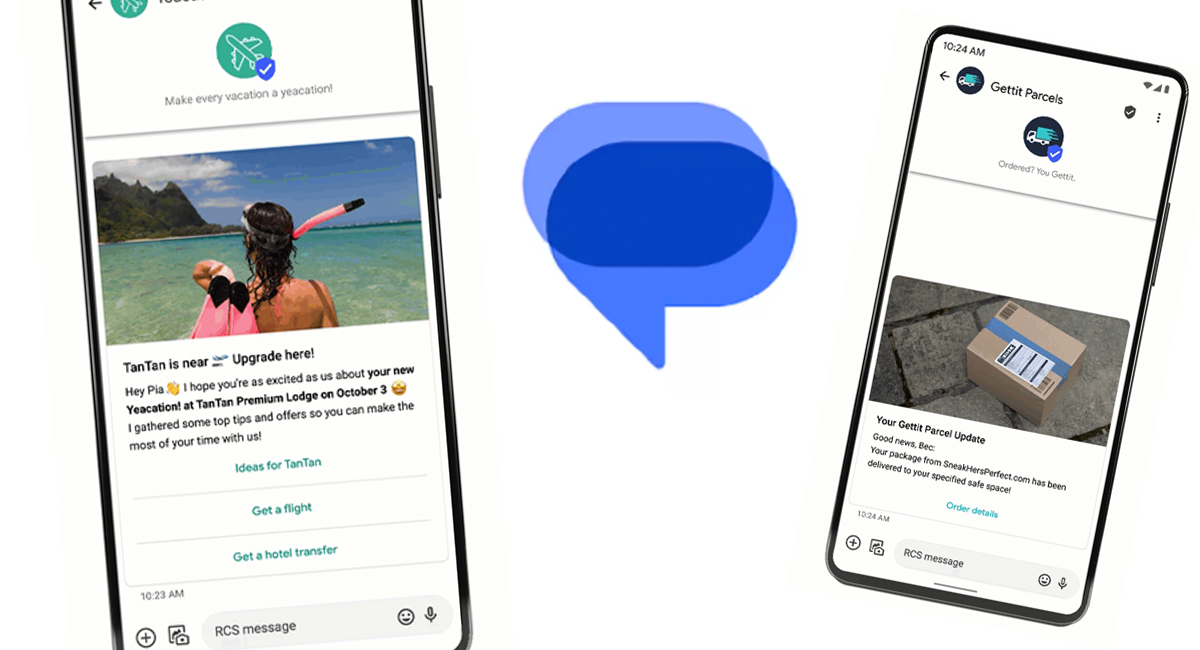What are Short Codes and How Do They Work?
Unlike the person-to-person (P2P) text messages we send and receive on our iPhones or Android devices via 10-digit phone numbers (known as 10DLCs or Long Codes), short codes do the same thing using 5 or 6 digit codes in the United States (other countries vary).
Short codes power the transmission of application-to-person (A2P) text messages–usually via SMS (simple text messages) as opposed to MMS (multimedia messaging), which is more expensive and slower to transmit. The limited number of characters in SMS messages–160 characters maximum–and lack of graphics give short codes a smaller footprint and allow for the fastest throughput, making it the top choice for companies needing to communicate time-sensitive information to large groups of people.
Short code numbers are leased and can take up to three months to acquire and register, but once they’re approved there is minimal carrier filtering so messages are delivered almost immediately. The numbers are fairly expensive; until recently companies could share a number or lease it “part time,” but in 2022 that is no longer an option.
On the plus side, high throughput means that one number is often all a company needs and can become a part of their brand that people recognize when they receive messages.
Advantages
- High throughput short code is the quickest way to communicate with customers, particularly in large numbers and across multiple localities.
- Once you have your short code number there’s minimal filtering, adding to the speed of communication. Short code is unbeatable for getting the word out quickly!
- If you do need to send a high volume of messages, long code runs the risk of being marked as spam; short code’s lack of carrier filtering may be the better option.
- If you use a short code consistently, it can become part of your brand; you can even spell out a brand name or differentiator with the letters on the numeric pad if the number is available (for example, “Commio” would be 266646).
Disadvantages
- Although Commio can obtain new numbers for customers a little faster than most providers, carriers set the bar high for acceptable use cases and it can take as much as several months to get approved for a number.
- Short codes are comparatively expensive, although the gap is smaller now that long code has new rules and fees.
- Whereas customers can reply to long codes, short codes are mostly one-way. The applications are usually programmed to understand limited codes or keywords, such as “Text C to Confirm,” but the freeform replies we enjoy with long code are often not an option, calling a short code isn’t possible, and some recipients may find this frustrating.
The Use Cases for Short Code
Short code is typically used for high-volume blasts to lots of people, such as marketing promotions, or targeted, automated, one-to-one messages about a product or service. The latter includes things like alerts, password resets, and two-factor authentication.
Marketing promotions
 If you have a large customer base and your offer isn’t visual, short code can be a good option–especially if you have a timely offer such as “Click through for 25% off today only!” An example of a short code marketing promotion is:
If you have a large customer base and your offer isn’t visual, short code can be a good option–especially if you have a timely offer such as “Click through for 25% off today only!” An example of a short code marketing promotion is:
“Book your T-Mobile Travel Pass before you fly! Get high-speed data & unlimited talk in 210+ countries & destinations starting at just $5.”
It is important to note that while all short code messaging (as well as long code and toll-free messaging) can only be sent to recipients who have opted in and must comply with industry messaging regulations, carriers will scrutinize marketing use cases very carefully. If your reputation and your messaging isn’t squeaky clean, these cases are the first to be denied!
Automated One-to-One Messages
 Chances are you receive these product and service updates every other day from businesses, and they are really short code’s sweet spot. A few common use cases and examples include:
Chances are you receive these product and service updates every other day from businesses, and they are really short code’s sweet spot. A few common use cases and examples include:
- Alerts, for urgent / important “must know” information – “There is currently a power outage in your area. Our estimate for repairs is 7pm.”
- Notifications – typically reminders and updates that help ensure the desired response (eg, making sure you don’t miss your appointment) and also keep the brand in front of people – “Your next dental appointment with Dr. Cooper is tomorrow at 3pm. Please reply with “C” to confirm. Call (919)234-5678 if conflict.” Or, “Your Lowes order is arriving soon, December 8, between 8am and Noon. Click here for order information.”
- Password resets for access to an account, application, or restricted website – “Follow this link to reset the password to your Chase Visa Card account.”
- Two-factor authentication, for enhanced security – “Target RedCard – Your one-time passcode is 12345 and will expire in 15 minutes. If you didn’t request the passcode, contact us at (800)234-5678.”
Note that all of these texts should also include an option to opt out of future messages: “Reply STOP to cancel.”
Is Short Code Right for You?
The unique differentiators of short code messaging make it the ideal choice for both large-scale messages that need to be delivered quickly, as well as for sending detailed product and service information and updates to specific individuals. Given the time and expense of acquiring a short code number, however, you’ll want to examine the alternatives and plan your usage carefully. Our Commio messaging experts are standing by to analyze your specific needs and help you select the best option.
For a full overview of all of your messaging options and how to optimize them, please watch our SMS webinar-on-demand.
See also: eBook Introduction | Short Code | Long Code | Toll-Free Messaging | Opt-In Lists | Messaging Rules | Delivery Receipts (DLRs) | Messaging APIs
















